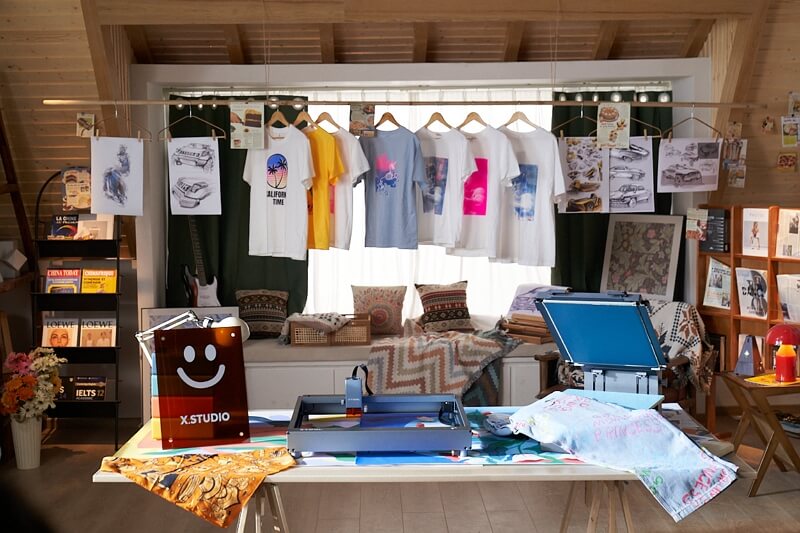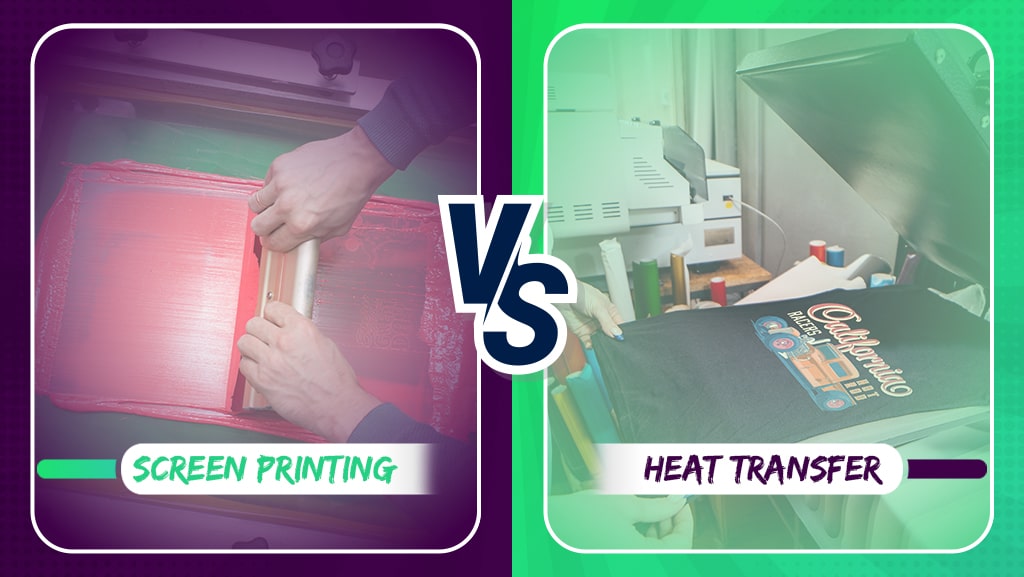Tx Tees Fundamentals Explained
Wiki Article
The 45-Second Trick For Tx Tees
Table of ContentsThe Main Principles Of Tx Tees The Buzz on Tx TeesMore About Tx TeesThe smart Trick of Tx Tees That Nobody is Talking AboutExcitement About Tx TeesTx Tees for BeginnersTx Tees - The Facts
That brings your total amount to around $1,900 prior to tax obligation and shipping. Accumulate various other prices, like the number of energies it requires to run the store and the expense of ink and emulsion per layout. custom monograming. Take the print below for instance. This is a one-color photo, so the expense of ink per tee shirt is about 20 cents.The solution ought to only be a few cents considering that you 'd just require to coat one screen for this job. Generally, printers try to make up to 45% revenue on a print task.

With DTF, you can publish a handful of t shirts, or simply one. Make use of the exact same calculator as the section over to compute just how much revenue you 'd make utilizing DTF transfers. Compare the expenses and profits to whichever method speaks ideal to your arrangement and procedure. Both screen printing and DTF have their particular niches on the planet.
The Buzz on Tx Tees
The very best way to understand? Ask about and see what print shops like your own are doing. custom t-shirt design. Attempt both out and see which you like better
When you're choosing what kind of printing approach to use for printing your artwork layouts on your garments, it is necessary that you understand the distinctions in between these 2 techniques so you can make best use of results while reducing expenses. Screen printing is the most generally used technique for printing styles on textiles.
DTG printing is likewise called place or straight to garment printing since it prints only what is needed rather than making a screen as screen printers do. https://www.pubpub.org/user/russell-costello. Display printing works by display filler squeegee screen printing ink screen mesh screen, after that transferring the photo to garment utilizing warmth and/or stress
The DTG printer uses unique dye-sublimation inks that are applied right into a pre-designed picture by a digital printing system. The inks come to be part of the material, permitting vivid colors and remarkable information. It's also referred to as spot or straight to garment printing since it publishes only what is required rather of making a screen as display printers do.
Tx Tees for Beginners
It's much quicker - you can print a fullcolor photo in minutes, as opposed to hours for screen printing. Second, there's no set up time or costs included - you can publish any kind of layout you such as, without having to develop a screen. Third, there's no waste - because screen printers screen print one design at a time, they need to evaluate each shade individually.
The paper is extremely pricey and can just be made use of as soon as. Once it's published on, it has to be thrown out. - The initial acquisition rate is reduced than the upfront investment of DTG printers- You can print multi-color designs one screen at once as opposed to needing to print each shade independently like DTG printing.

About Tx Tees
Instead of making use of screen mesh as screen printers do, dye sublimation printers make use of laser modern technology to transfer your photos onto garments or paper. A warmth procedure moves the dye from its solid-state straight right into the gas stage which in turn integrates it onto textile substratums when they are rapidly heated up to high temperature levels under high pressure.Sublimation printing is environmentally friendly. It utilizes much less water than screenprinting, and since it does not entail the usage of unsafe solvents, it's safe for all sorts of garments. The dye sublimation inks are also odor-free when healed, unlike screen printers that utilize unsafe chemicals throughout the display printing process that leave an undesirable smell.
They additionally conserve money on expensive devices like exposure systems considering that dye sublimation printers do not need a UV direct exposure device or a flash treatment oven that is commonly made use of in display printing (screen printing shop). What is direct to garment printing (DTG Printing)? DTG printing is an electronic screenprinting procedure that publishes straight onto material utilizing specialized inkjet printers
About Tx Tees
DTG printing supplies several advantages over standard screenprinting, including the capacity to publish photo top quality pictures, greater shade vibrancy, and the ability to print layouts on darker materials. DTG printers function by heating up the textile ink till it becomes a gas. The gas after that permeates the textile, bonding with the fibers to produce a permanent print.
Display printers merely prepare their display after that start printing until they run out of item or ink.- There is a wide variety of experienced display printers around the world, which can be practical for novices. - It's a slower procedure - display printers typically need to wait for the ink to completely dry before they can publish the next color- Display printers need manual work, so there's a higher knowing contour and it takes longer to produce a top quality layout- Display printing isn't as precise as DTG printing, so you may obtain some "bleeding" of colors from one part of the image onto an additional otherwise done correctly.
The 4-Minute Rule for Tx Tees
Rather of utilizing display mesh as screen printers do, color sublimation printers make use of laser innovation to transfer your photos onto garments or paper. A heat process moves the dye from its solid-state directly right into the gas phase which subsequently fuses it onto textile substrates when they are rapidly warmed to heats under high stress.Sublimation printing is green. It utilizes much less water than screenprinting, and since it does not involve making use of hazardous solvents, it's secure for all types of garments. The dye sublimation inks are likewise odorless when treated, unlike display printers that use dangerous chemicals throughout the screen printing procedure that leave an undesirable odor.
They likewise conserve cash on pricey equipment like direct exposure units because color sublimation printers do not call for a UV direct exposure unit or a flash remedy stove that is typically used in screen printing. What is direct to garment printing (DTG Printing)? DTG printing is an electronic screenprinting procedure that prints directly onto fabric utilizing specialized inkjet printers.
The Ultimate Guide To Tx Tees
DTG printing provides lots of advantages over typical screenprinting, consisting of the capability to print photographic quality images, better shade vibrancy, and the capability to print designs on darker fabrics. DTG printers work by warming the fabric ink up until it turns into a gas. The gas then penetrates the material, bonding with the fibers to produce a long-term print.Report this wiki page